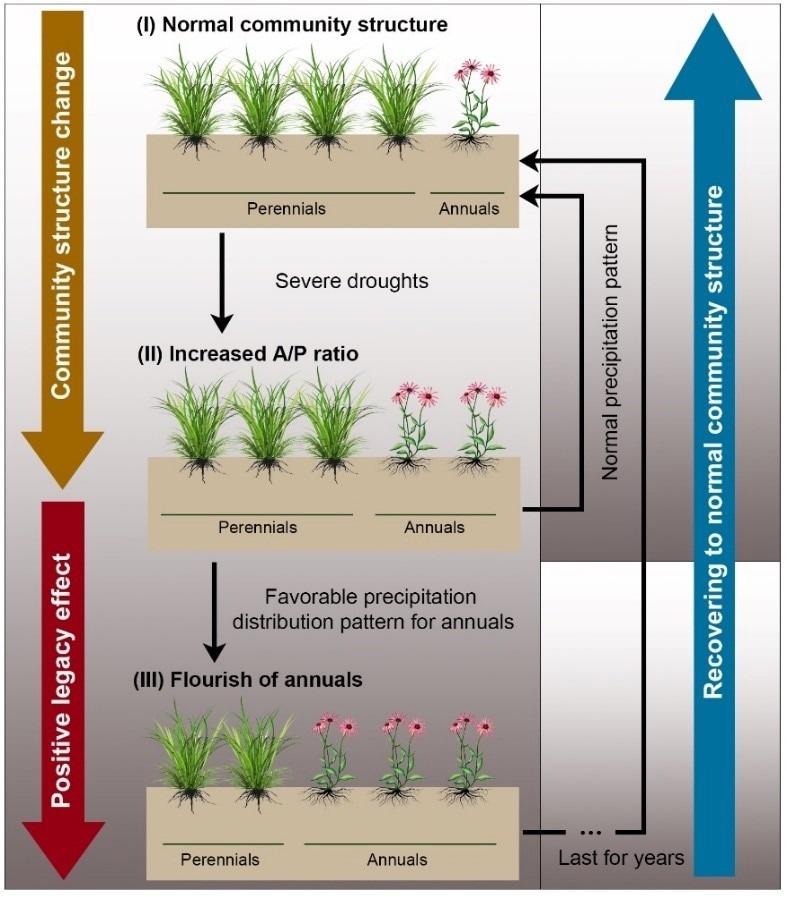Reviewed by Alex SmithNov 28 2022
A constant increase in grasslands has been noticed worldwide due to global change-induced extreme droughts. Severe droughts help in considerably decreasing current-year grassland productivity. However, they also have an impact on productivity in the following years.
 Conceptual framework showing how drought-induced community structure change and subsequent-year precipitation pattern interactively drive a positive legacy effect. Image Credit: by PAN Qingmin.
Conceptual framework showing how drought-induced community structure change and subsequent-year precipitation pattern interactively drive a positive legacy effect. Image Credit: by PAN Qingmin.
Such drought legacies have the potential to highly impact the reaction of grassland ecosystems to climate change. Generally, severe droughts tend to have a negative legacy effect on grassland productivity due to the losses of plant mortality or meristematic tissues.
Integrating a four-year precipitation manipulation experiment with a forty-year observational study in the Inner Mongolia grassland, scientists from the Institute of Botany of the Chinese Academy of Sciences (CAS) discovered that early-year extreme droughts could make powerful positive legacies for current-year community productivity when drought treatments were hindered.
This outcome was highly different from early findings that drought years generally had negative legacy effects on community productivity.
In this study, the scientists headed by Professor Qingmin Pan and Professor Xingguo Han found out that the mechanism pushing positive drought legacies was the coupled effect of a drought-induced increase in annuals in the past year and a so-called “early less, middle more” precipitation pattern that aided the flourishing of annuals in the present year.
If such a pattern rises for several years, so will the positive legacy effect.
Considering this, the scientists offered experimental and observational proof that extreme drought-induced change in community structure in the past year, as denoted by an increase in the annuals or perennials ratio, coupled with a beneficial precipitation pattern for the flourishing of annuals in following years, could have powerful positive legacy effects on community productivity.
This study discovered positive legacy effects on grassland productivity in over one-third of the past four decades.
As global climate models anticipate highly frequent drought extremes in grasslands throughout the world, such findings might have effects on comprehending the effect of extreme drought on ecosystem services and functioning in grasslands.
Considering that the annuals are becoming highly abundant in a large number of grazing grasslands throughout the world, drought-induced positive legacies in these systems have been anticipated to be highly apparent. Hence, models forecasting ecosystem feedback in reaction to climate change must consider positive drought legacies in grasslands.
This study was financially supported by the National Natural Science Foundation of China and the Strategic Priority Research Program of CAS.